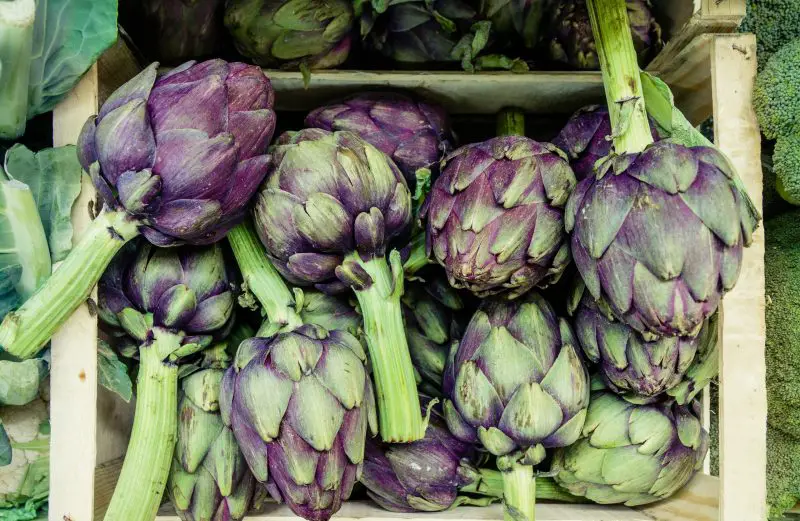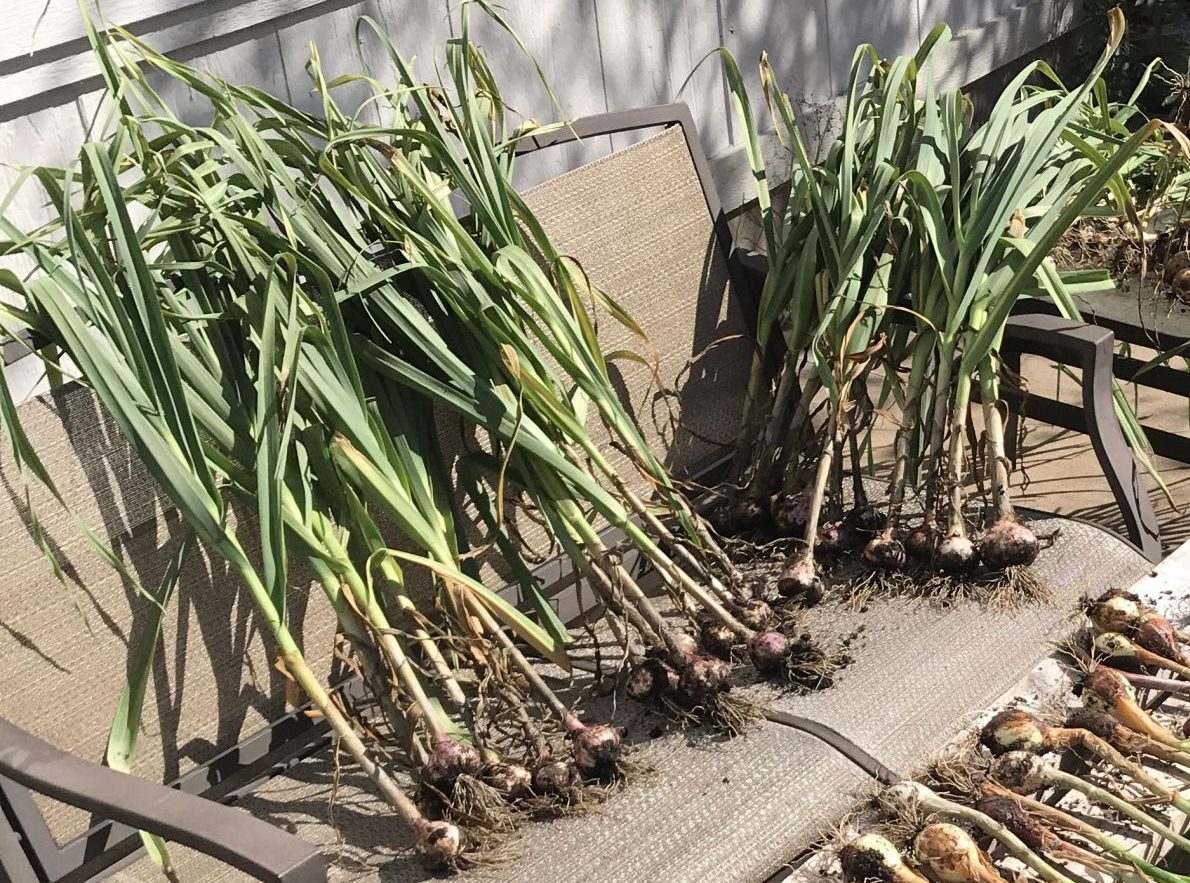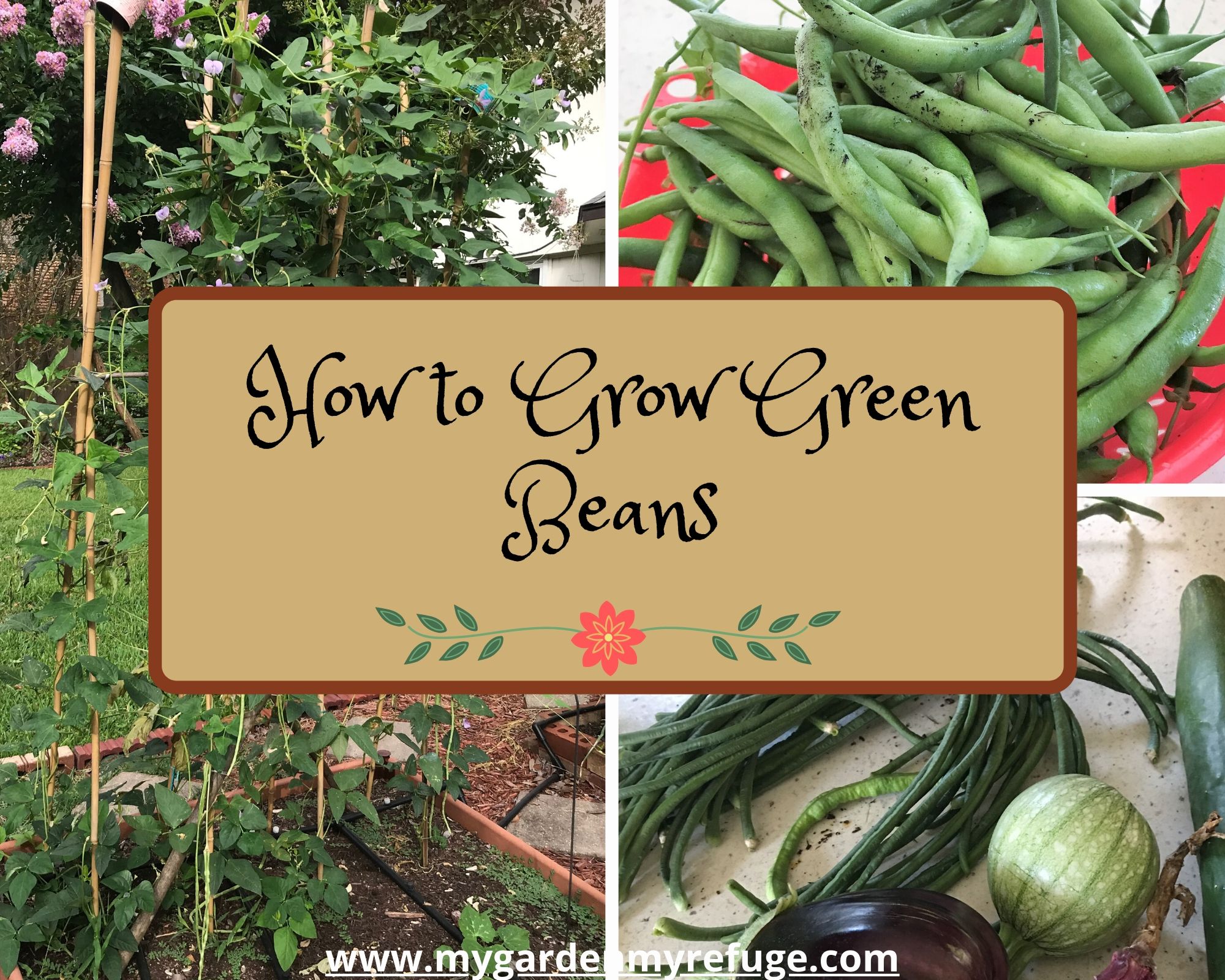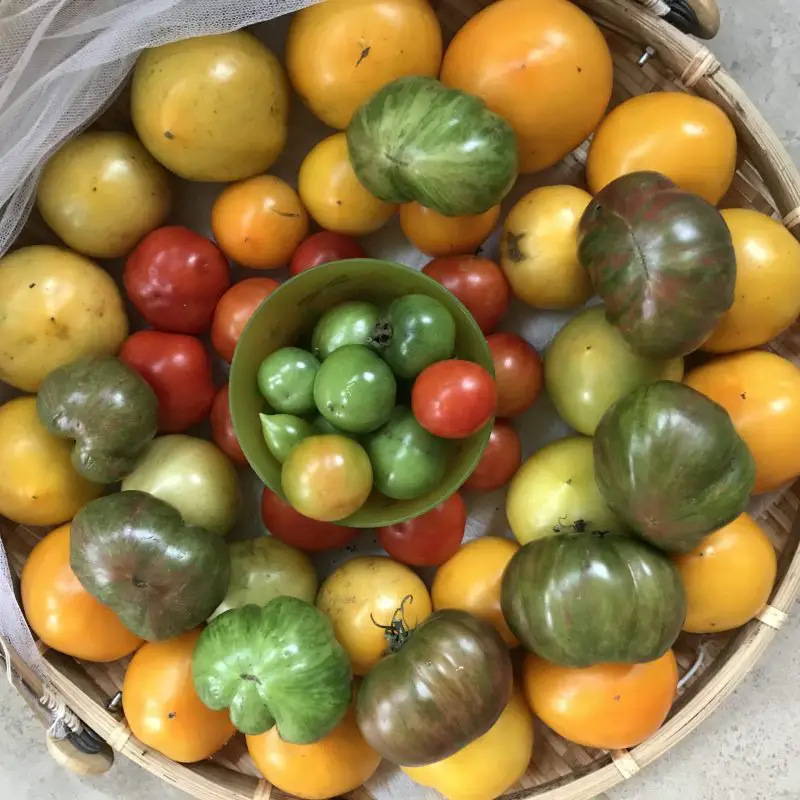Artichokes and cardoons are more prevalent in the Mediterranean regions. However, they were brought to America by the French in the 1800s. Even though they are easy to grow, home gardeners are still unfamiliar with them. Here is all you need to know about growing artichokes and cardoons in your backyard.

What are Artichokes and Cardoons?
Artichokes and cardoons are cousins. They both belong to the thistle family, which remains primarily wild. Despite its robust growth and high nutritional and medicinal values, growers only cultivated artichokes and cartoons for commercial production.
Artichoke and cardoon plants are pretty much the same. The main difference is that people grow artichokes for their flowers and cardoons for the stems. However, there is no harm in eating artichoke stems too.
The plant can grow to reach three to five feet tall and two feet wide. The central stem is thick, hollow, and with an uneven surface. The leaves are long with a thick midrib and sharp pointy blade.
The artichoke flower is quite striking if left to mature. The 7-inches wide thistle-like flower has stunning lavender-blue color, making it a great addition to flower arrangements, fresh or dried. You can also leave it on the plant to feed the wildlife.
When to grow Artichokes and Cardoons
In central Texas, plant artichokes and cardoons in early fall. The plants need about 180 days to establish a strong root system and produce in early spring. Due to the hot summer, the plants will look rather stressed and unsightly before dying back. They will eventually send new pups in the fall.
Are artichoke and cardoon plants perennials?
Artichokes and cardoons are perennial plants from zone 5 and up. They are cold-hardy down to 25F (-4C). However, they do not appreciate high temperatures either. The plants will lose their vigor for central Texas gardeners as soon as the heat settles, but they will send new shoots in the fall.
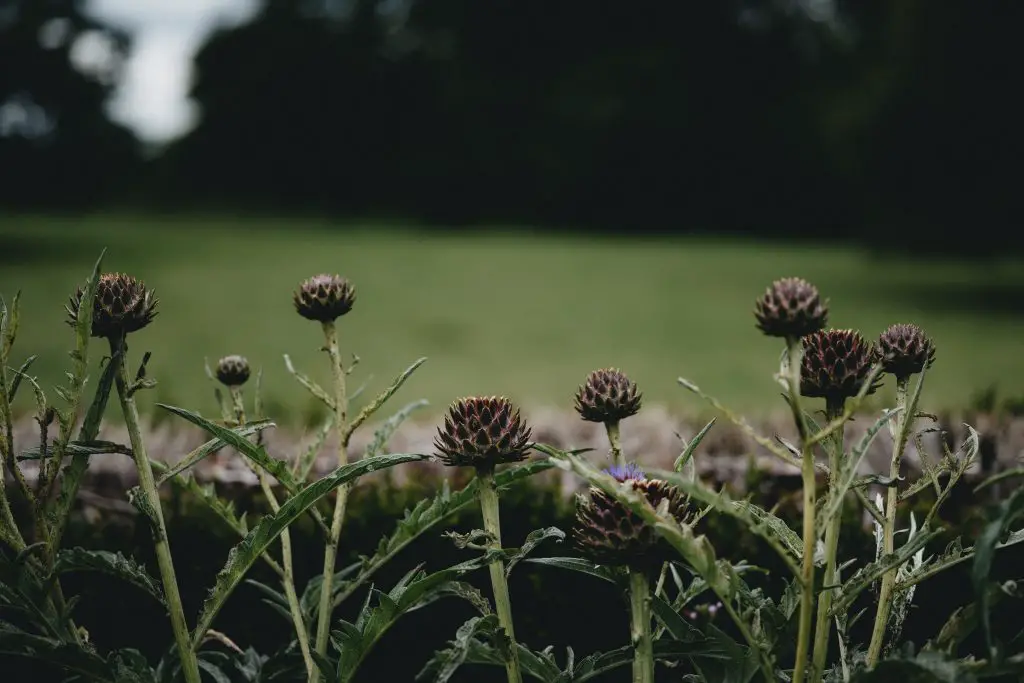
Growing artichokes and cardoons from seeds and rhizomes
Artichokes and cardoons can grow easily from seed. However, they need about 60 days for the seedling to be ready for transplanting. To plant in October, you should start the seeds mid-summer, July through August. And then, you will have to wait a year or two to get a vigorous plant.
On the other hand, growing artichokes and cardoons from rhizomes is more efficient, cutting up the wait for the plant to reach maturity. In addition, it is easier to make new plants from the new pups.
Where to get artichoke and cardoon seeds or transplants?
You can find artichoke and cardoon seeds at online seed sellers, such as Baker Creek, Johnny’s, and others. However, if you are looking for transplants, your best bet is local nurseries in the fall or spring seasons.
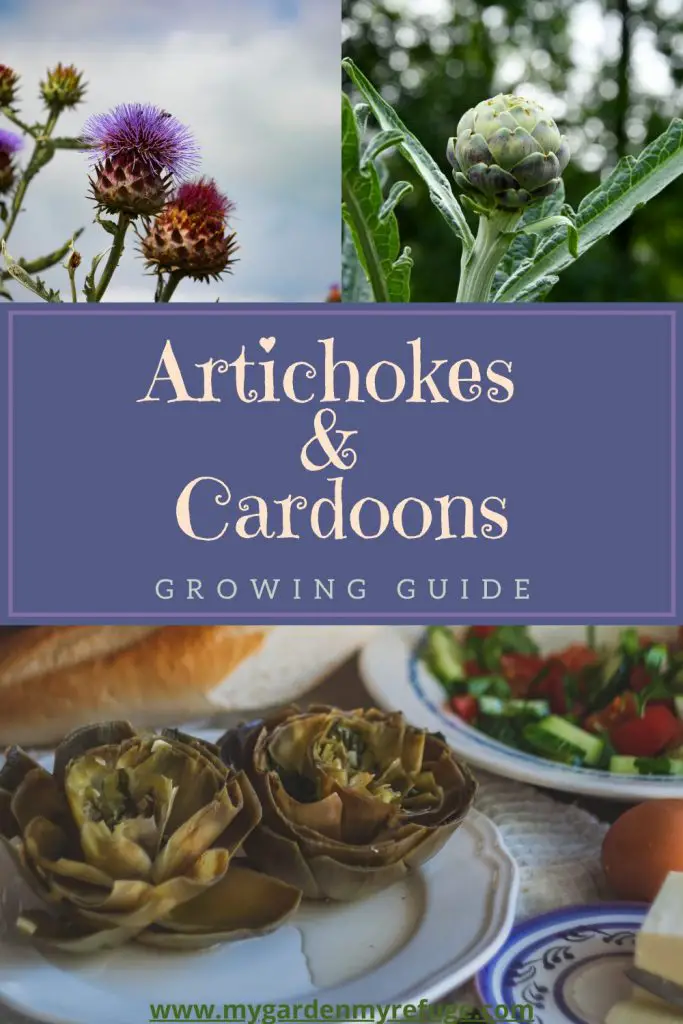
How to plant artichokes and cardoons?
Full sun
Artichokes and cardoons are stalky leafy greens, so they need a lot of light to produce energy through photosynthesis. Therefore, they need six to eight hours of direct sunlight anything less will stunt their growth and decrease production.
Soil
You need to plant artichokes and cardoons in rich and well-draining soil. If you have clay or sandy soil, amend it with a lot of compost to rectify it.
Water
As mentioned above, artichokes and cardoons are natives of the Mediterranean region. They can withstand a short drought, but they will need some water at some point.
Fertilizer
For home gardeners, it is essential to feed you artichoke and cardoon plants. Fertilize with high Nitrogen ( first number) at the beginning stages of growth to promote leafy growth. Apply it every week or every two weeks. To promote artichokes blooms, follow up with a high Phosphorus (middle number) fertilizer every two weeks once the plant is vigorous.
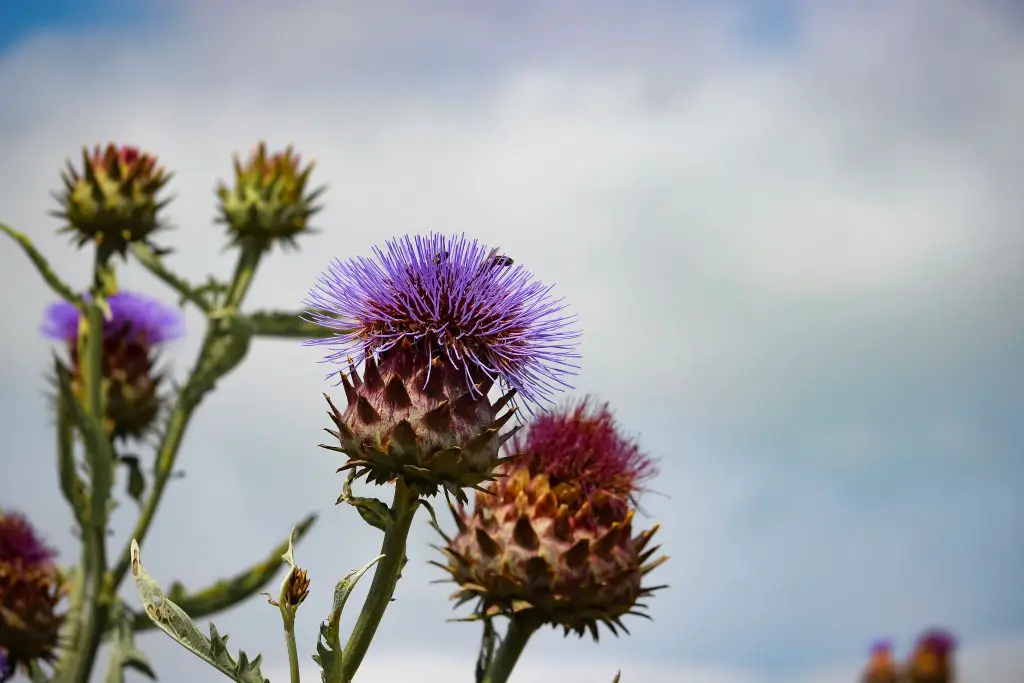
How to care for artichokes and cardoons?
Artichokes and cardoon plants are easy to care for if you provide the right growing conditions. Prune it back to the ground once the plant stops production and starts going dormant. Cover the base with mulch to protect it from the harsh sun and heat.
When to harvest artichokes and cardoons?
Artichokes
The edible part of the artichoke is the flower’s inner heart and the petal’s base. At harvest time, the bud should be firm and close. Use a sharp knife and make a swift cut at the bottom of the bud. You may also get some of the stem, but you must peel it before eating.
Cardoons
Cardoons are grown for their stem or leaf midrib. The plant’s stems grow into a bundle like celery. Usually, commercial growers harvest the whole plant for sale. However, home gardeners can apply the cut-and-come-again technique and harvest only the outer leaves.
Use a sharp serrated knife to cut the leaf or the bundle at the base. Then remove the leaf blade, leaving only the mid-rib, and pull any fibrous strings from the ragged side.
It is crucial to blanch or parboil cardoons before adding them to any recipe to reduce bitterness.
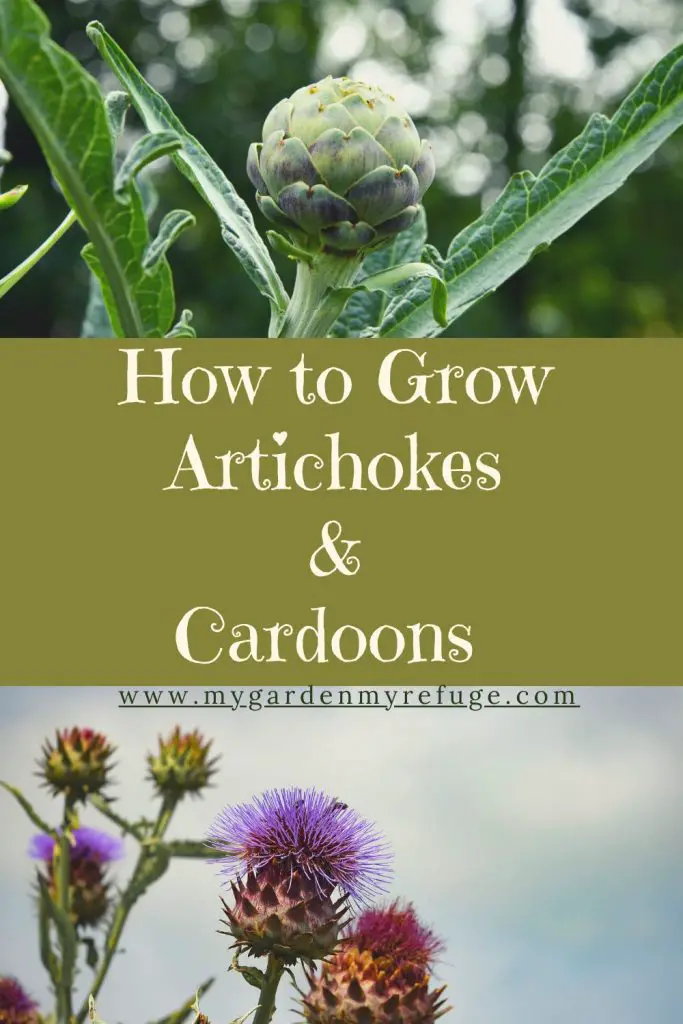
How to propagate artichoke and cardoon plants?
You can propagate your artichoke and cardoon plants every two years. Wait until the new pups start showing to locate your new plants, use a sharpshooter to make a clean cut at the base, then lift the rhizome carefully from the ground.
Plant the freshly cut rhizome immediately and water right away. If you are not ready to plant it, place it in a bucket with some water.
Can I grow artichoke and cardoons in a pot?
It is possible to grow artichokes and cardoons in pots, but that can get quite challenging in central Texas for the following reasons:
- To support the big plant, you will need a big pot that is at least five gallons.
- You will have to fertilize more frequently since potted plants run out of nutrients fast.
- You will have to water regularly to prevent the soil from drying out.
- Use good potting soil to prevent rot due to high moisture.
Is artichoke a productive plant?
In the best-case scenario, one artichoke plant can produce up to nine buds, which you must thin down to four or five. B t on average, you will get two to three buds per plant, so if you are an avid artichoke eater, plan accordingly.

What is the nutritional value of artichokes?
Artichokes and cardoons have great nutritional value, especially when eaten in season. They are rich in antioxidants, which help the immune system fight free radicals. They also help regulate blood sugar and cholesterol and promote a healthy digestive system with their high fiber content.
Artichokes and cardoons in the culinary world
Since artichokes and cardoons originated in the Mediterranean, there is no shortage of recipes. Between Southern Europe and North Africa, you can imagine the diversity. However, artichoke salad seems to be the typical recipe among all of them.
Boil the artichoke buds until soft, and the petals are easy to pull apart from the heart. First, the base of the petals is dipped in a simple vinaigrette and then scaped with the teeth. Once you reach the heart, remove the choke (the hairy part) before dipping it in the vinaigrette.
Here is a short list of recipes ideas:
- Moroccan Cardoon Tajine
- Algerian Stuffed Artichoke Hearts.
- Artichoke Leaf Salad
- Italian Cardoon Zuppa
- Cardoon & Potato Gratin
